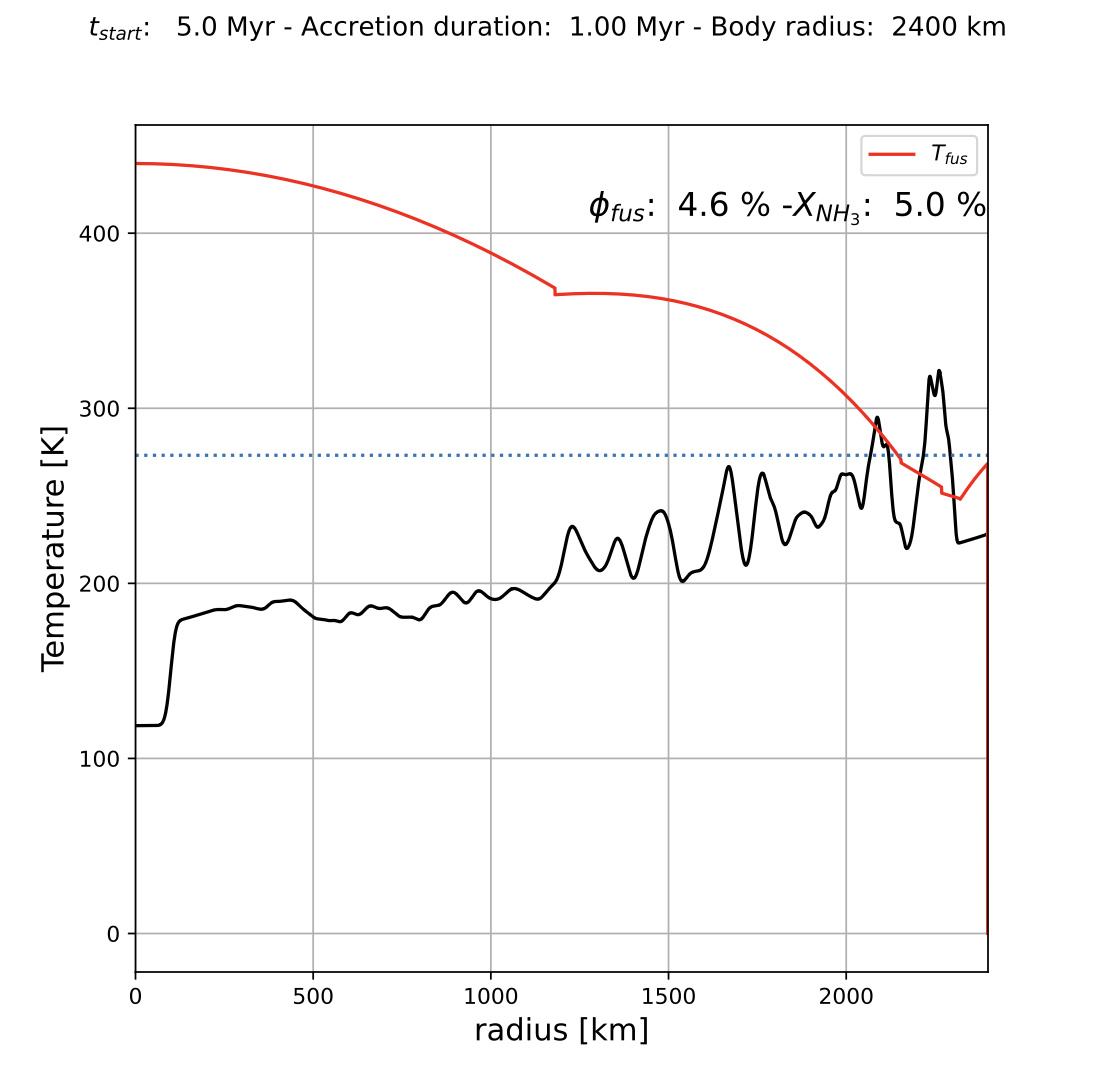- 1Aix-Marseille Université, Institut Origines, CNRS, CNES, LAM, Marseille, France
- 2IRAP, University of Toulouse, CNRS, Toulouse, France
The extent of differentiation within the interiors of the Galilean moons remains inadequately determined. Analysis of Callisto's moments of inertia, derived from Galileo's gravity data, suggests its structure lacks full differentiation. Furthermore, a recent reevaluation of the Galileo data casts doubt on the long-standing assumption of Europa possessing a metallic core. Our objective is to elucidate the accretion conditions necessary for the Galilean moons to develop in a manner consistent with their current state of differentiation. To achieve this, we employ a numerical model simulating the thermal evolution of icy moon interiors throughout their accretion and post-accretion phases. Each moon's embryo undergoes various heating mechanisms, including tidal heating, radiogenic heating, accretional heating from multiple impacts, and heat from the surrounding circumplanetary disk during growth. The magnitude of each heating process is contingent upon the presumed formation trajectory of each moon within the Jovian circumplanetary disk. Consequently, we investigate the accretion scenarios that explain the presence of a partially differentiated moon similar to Callisto and a fully differentiated moon akin to Ganymede. Additionally, we examine the conditions conducive to iron melting and the formation of a metallic core within Europa's context.

Figure 1- Temperature distribution inside Callisto, at the end of the accretion. tstart is the time when accretion begins relative to the formation of CAI’s. To avoid melting during accretion, the temperature profile (in black) must remain below the pressure-dependant melting curve for water ice (in red) with 5% ammoniac. For Callisto to accrete partially differentiated, the fraction of fusion φfus in radius must not exceed the 15-20% threshold.
How to cite: Bennacer, Y., Mousis, O., Monnereau, M., and Hue, V.: Probing the Formation Conditions of the Galilean Moons Through Their Differentiation States, Europlanet Science Congress 2024, Berlin, Germany, 8–13 Sep 2024, EPSC2024-905, https://doi.org/10.5194/epsc2024-905, 2024.